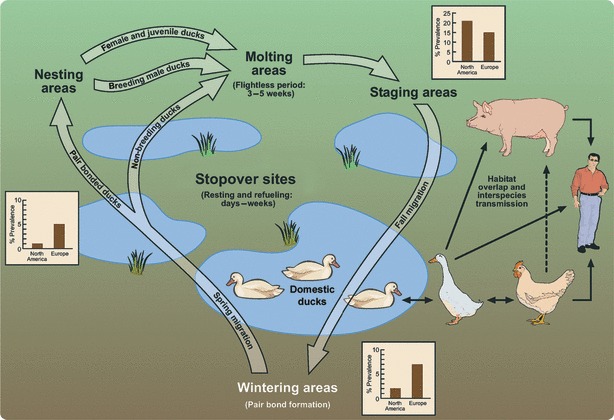Figure 1.

Overview of the annual movement and behavior of migratory ducks and their role in interspecies transmission. During spring and fall migration, the ducks rest and feed for a few days to weeks at numerous stopover sites (wetlands, lakes, or ponds) along the migration route. The length of stay and the aquatic habitat allows the transmission of influenza viruses to and from the domestic duck populations. Domestic ducks that become infected are likely to maintain the virus locally and increase the probability of its spread to other species. In the diagram, solid arrows indicate confirmed routes of transmission of LPAI and/or HPAI viruses between species. The dashed line represents a probable but unconfirmed route of transmission. The graphs indicate the average prevalence of low‐pathogenic avian influenza in North American and European duck populations during 3 stages of the annual migration. 10 , 16
